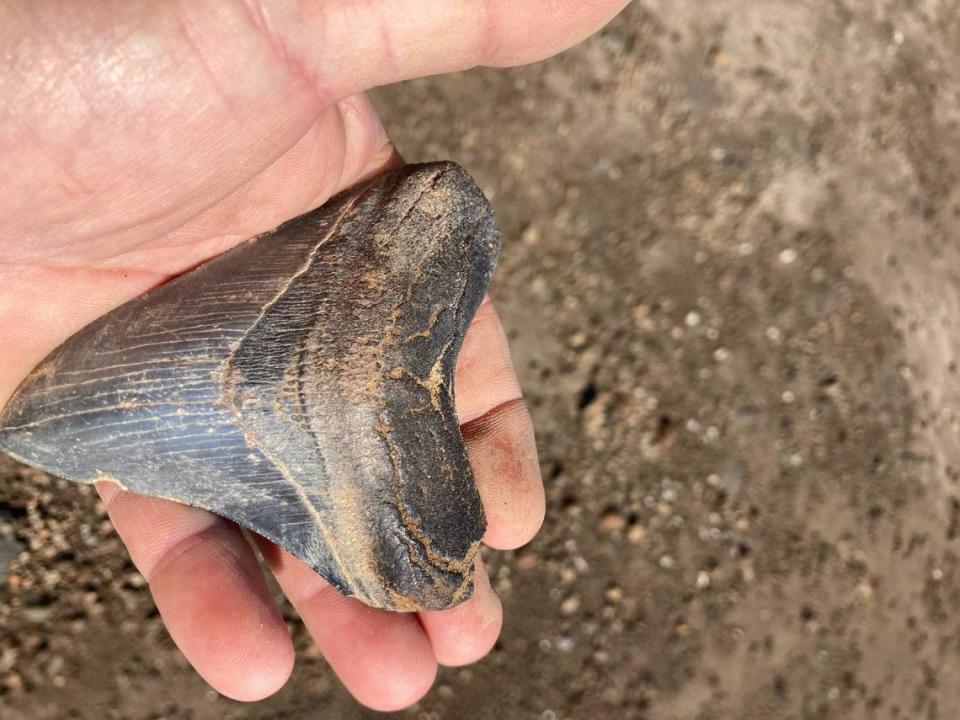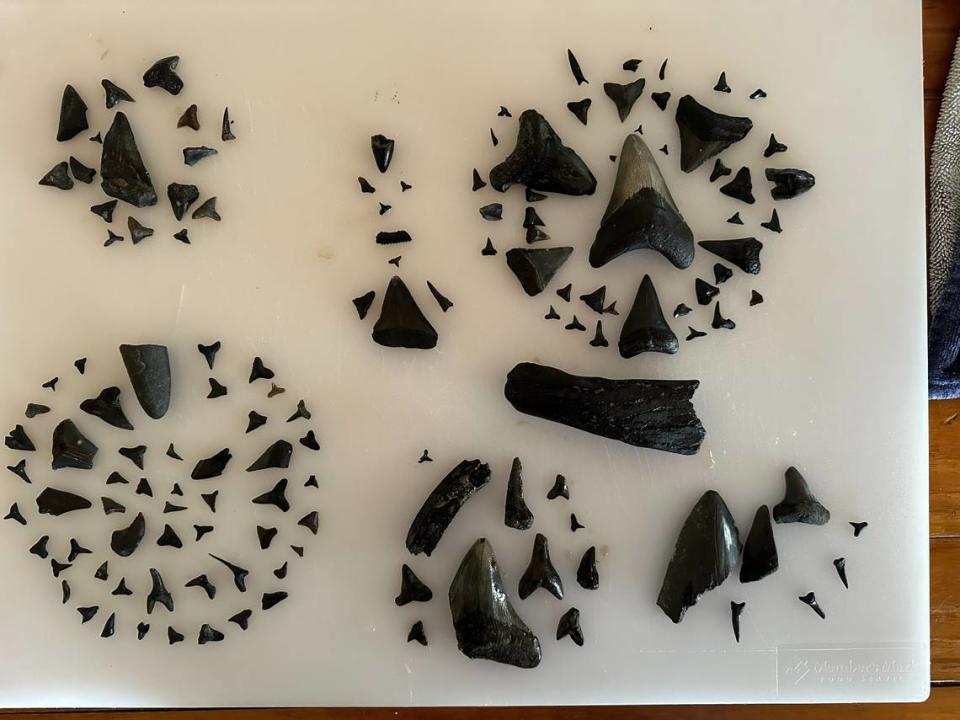Want to find a Megalodon tooth? One Hilton Head-area man has answers on where to look
Nearly 25 years ago on an island off the Savannah River, Stewart Yarborough struck a fossil fanatic’s proverbial gold.
A good friend had asked the Daufuskie native to go bottle-hunting – digging up the equivalent of a collector’s antique glass treasure buried in South Carolina land. Up and down the shore, ardently searching, they instead inadvertently found relics with tales millions of years old.
Fossilized shark teeth were peppered among gritty sand. Some were a deeper blue-gray, others more jagged. While his trips blur, it was his first or second when he plucked up a megalodon tooth belonging to a long-extinct prehistoric predator that most recently swam offshore 3.6 million years ago and weighed more than a Boeing-737. It was a visceral piece of proof that Yarborough couldn’t believe.
He was hooked.

Back then, he’d use any excuse to slip away from the humdrum and onto a quest for shark teeth. A masonry contractor at the time, Yarborough said the itch was so great that he’d skip work.
It’s far different now. Over two decades have passed. He’s found more than tens of thousands of shark teeth. And he and his son, Kade, have turned his penchant to the public. Since 2021, the Daufuskie Transit owner has chartered small groups to scope out shark teeth along the Savannah River.
“We basically just honed our skills to where, you know, we’re killing it,” Yarborough said.
Can he guarantee shark teeth for each charter? Yes. Hundreds. Is there a trick to finding megalodon teeth along the state’s coast? Sort of. There’s logic to the craft, sure, but tides and storms can be the more unpredictable factors when it comes to washed-up shark teeth on South Carolina and Georgia’s southeast coasts.
The main logic is straightforward: Dredging of the Savannah River. When the river is dredged to maintain its depth for cargo ships, “slurry,” as Yarborough calls it, is pumped from the bottom of the river and onto the shore.
“We search along the islands where they dump all that slurry,” he said. “Within that slurry that erodes from the bank, you get the shark’s teeth.”
Which islands are hot spots? He’s not telling.

The Yarboroughs’ success is wide and varied. An average charter finds between 150 and 250 teeth in one trip. The longest measured 9 inches. A lucky charter uncovered eight megalodon teeth in a day.
After a group finishes up their excursion, they splay out the teeth onto a plastic cutting board and help customers identify their finds. In the past three years, the dredges of the Savannah River have also turned up fossilized alligator and crocodile teeth, talons, and prehistoric horse teeth.
But for the shark-tooth finding fiends, the one-day stockpile is tough to beat: 355.

